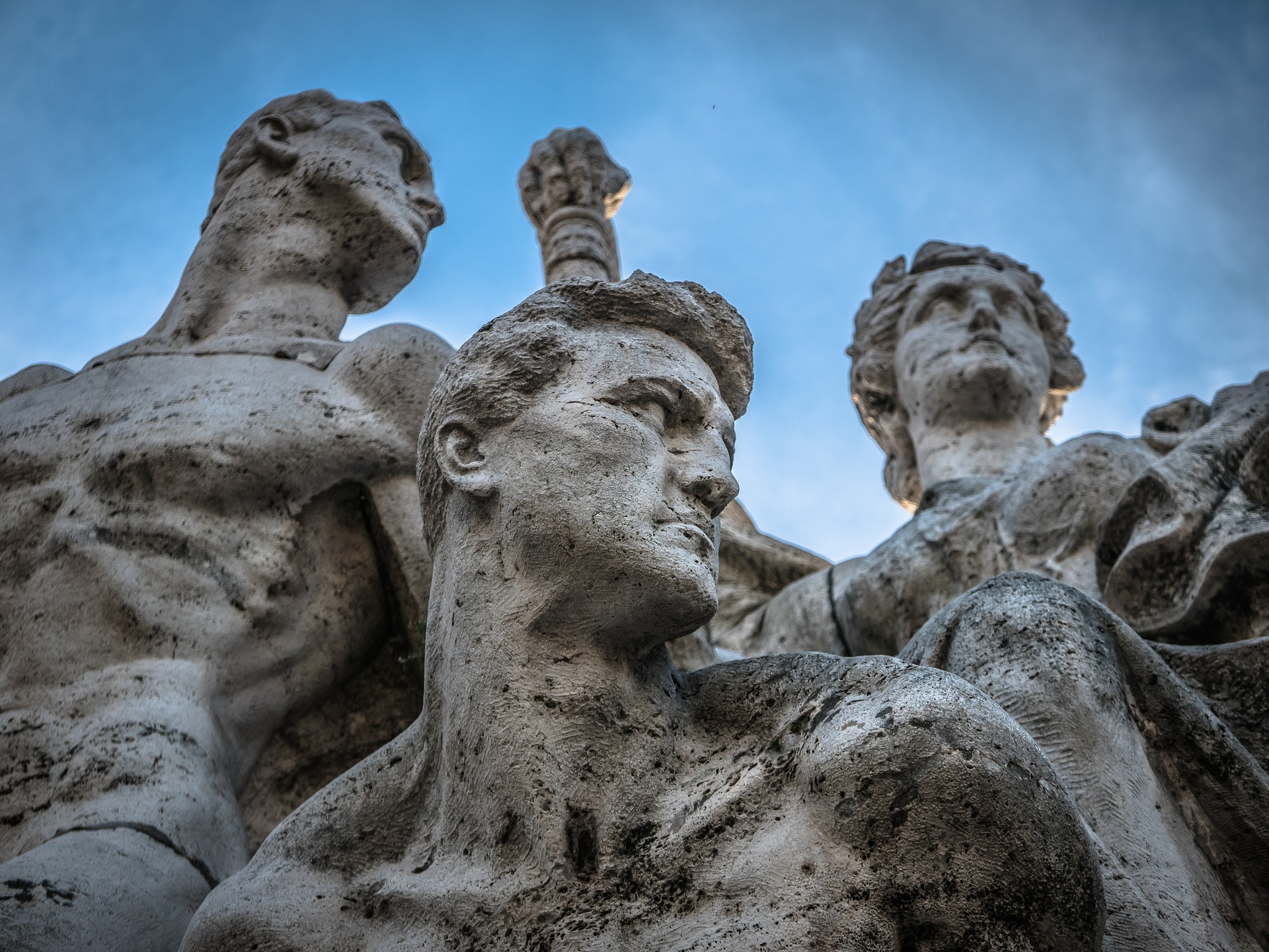
Ancient Romans
Ancient Impossible reveals how many of today’s technological achievements were actually developed centuries ago. One civilisation which contributed more than its fair share of innovations was that of Ancient Romans. You may not realise it but many of the things we take for granted in our everyday lives have their roots in Rome. Here are just a few examples.
Roads
The old proverb “all roads lead to Rome” (usually interpreted as “many paths may lead one to the same goal”) stems from the fact that originally they sort of did, or rather they came from Rome. In Britain there were no roads prior to arrival of the Romans who created a network of straight, solid highways built on foundations of clay, chalk and gravel with larger flat stones laid on top.
These roads were slightly raised in the middle, sloping down to either side so that rain and surface water would drain off into ditches on either side. It's not merely the concept of roads that we got from the Romans, however; twenty five A roads and several B roads in use in the UK today are overlying original Roman roads, while many other modern roads follow very similar paths to those they created.
Central heating
British Winters (and sometimes Summers too) would be all but unbearable for many were it not for those hard-working boilers and radiators. Roman central heating worked slightly differently, but the goal was the same. A ground level furnace was used to create hot air which circulated beneath a thin floor raised up on pillars of tiles – this system was called a hypocaust. Not only was this central heating, it was underfloor heating!
Smoke and fumes from the furnace were channelled off via flues so as not to pollute the heated space above. The same method was used to heat the waters in bath houses (yes, the Romans gave us hot baths too).
Concrete
Opus caementicium (Roman concrete) was made from quicklime, pozzolana and an aggregate of pumice. Its widespread use in many Roman structures was a key part of what is now known as the Roman Architectural Revolution. Although concrete was used for many things (roads included), one of the most impressive applications was the construction of the 4535 metric ton, 21 foot (6.4 metre) thick dome at the Pantheon in Rome, which can still be visited.
Today, historians and scientists alike are looking deeper than ever into Roman concrete's secrets because it seems it may actually have been better than what we use today. The Pantheon's dome is nearly two thousand years old after all, while some modern concrete constructions are already crumbling.
The calendar
That's right, without the Romans you wouldn’t even know what month it was, let alone day. Well, maybe you would but they would be called something different, and there might be less of them. The Julian calendar, introduced by Julius Caesar in 46 BC, was a reform of the Roman calendar, taking effect shortly after the Roman conquest of Egypt.
The Julian calendar split the year for the first time into 365 days, divided into 12 months, with a leap day added to February every four years. It was revised in 1582 to the Gregorian calendar (in use today) which is actually only 0.002% more accurate.
Flushing toilets and sewers
In Rome, large pots were often left on street corners for people to urinate into so that the liquid could be collected and used in the tanning of animal hides and in cleaning (no, really). In some multi-storey dwellings a system of pipes channelled faeces down to ground level where the Night Soil Men could collect it and take it to be used as fertiliser. Roman public toilets were rather more sophisticated, though admittedly not nearly so useful for industries hoping to capitalise on freely available human waste.
Ancient Roman public bathrooms consisted of long stone benches with holes every few feet for people to seat themselves over. Beneath the toilets flowed a system of plumbing that rivalled modern day cities; constant running water flushed away the waste into an enormous sewage system called the Cloaca Maxima (Great Drain).
This system was made possible by several aqueducts (another Roman innovation, of course) that flowed into the city, giving its citizens a constant supply of fresh running water.
Acknowledgement: Article was written by and appears on history.co.uk
Explore Roman inventions and architecture on one of our selected Tours in Italy.
If you like old Roman architecture, some of the best is found in the south of France e.g. the longest and best preserved Roman aquaduct of the Pont du Gard, the Roman Arenas in Arles, the Roman ruins of Glanum in St Remy-de-Provence, the Roman theatre in Orange, the Roman theatre and amphitheatre in Lyon. - and many others.
Explore some of our Tours in Provence and discover these monuments.